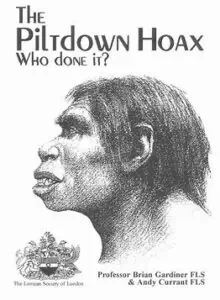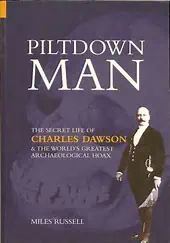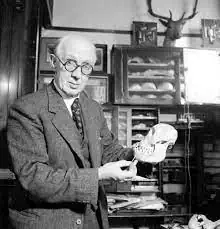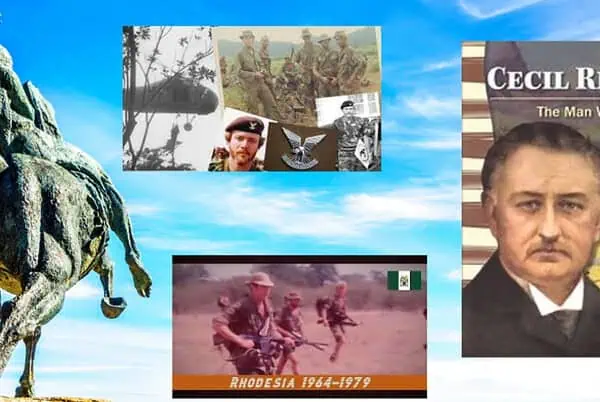Piltdown Man: Experts now pretty certain Charles Dawson did it
 There have been multiple investigations. Lots of theories. But the two definitive investigations, one in 1953 and another more recently in 2016, point to one man. Sir Arthur Conan Doyle, writer of the Sherlock Holmes novels, can be ruled out.
There have been multiple investigations. Lots of theories. But the two definitive investigations, one in 1953 and another more recently in 2016, point to one man. Sir Arthur Conan Doyle, writer of the Sherlock Holmes novels, can be ruled out.
Three other suspects, while having intriguing motives, very likely did not have the knowledge to pull off such a grand scheme. Though, it still remains a possibility one of them might have been involved assisting the hoax.
Chris Stringer, from his 2012 paper published in Nature:
Personally, I am intrigued by the question of whether the hoax was driven by scientific ambition or by more jocular or vindictive motives. Also, the story has continuing relevance beyond its allure as a whodunnit: it is a warning to scientists to keep their critical guard up, and an example of the (eventual) triumph of the scientific method.
Further background from Stringer:
In 1891, a Dutch paleo-anthropologist described the first known specimens of Homo erectus (‘Java Man’), which he had discovered in Indonesia. Sixteen years later, a workman in Germany unearthed the jaw of ‘Heidelberg Man’, a possible descendant of H. erectus. Thus it was with great pride that Arthur Smith Woodward and Charles Dawson announced on 18 December 1912 that they had found an even more remarkable fossil human at Piltdown.
Certainty that Dawson did it: But still outstanding whether or not he acted alone?
 The definitive paper came out in 2016. Chris Stringer was a co-author. Of course, Stringer is Curator Emeritus at the London Natural History Museum where much of the scandal transpired.
The definitive paper came out in 2016. Chris Stringer was a co-author. Of course, Stringer is Curator Emeritus at the London Natural History Museum where much of the scandal transpired.
Other co-authors include: Isabelle DeGroote, Linus Girdland Flink and Silvio Bello.
New genetic and morphological evidence suggests a single hoaxer created ‘Piltdown man’
From the Abstract:
In 1912, palaeontologist Arthur Smith Woodward and amateur antiquarian and solicitor Charles Dawson announced the discovery of a fossil that supposedly provided a link between apes and humans:Eoanthropus dawsoni(Dawson’s dawn man). The publication generated huge interest from scientists and the general public. However, ‘Piltdown man’s’ initial celebrity has long been overshadowed by its subsequent infamy as one of the most famous scientific frauds in history.
Our re-evaluation of the Piltdown fossils using the latest scientific methods (DNA analyses, high-precision measurements, spectroscopy and virtual anthropology) shows that it is highly likely that a single orang-utan specimen and at least two human specimens were used to create the fake fossils.
 The modus operandi was found consistent throughout the assemblage (specimens are stained brown, loaded with gravel fragments and restored using filling materials), linking all specimens from the Piltdown I and Piltdown II sites to a single forger—Charles Dawson.
The modus operandi was found consistent throughout the assemblage (specimens are stained brown, loaded with gravel fragments and restored using filling materials), linking all specimens from the Piltdown I and Piltdown II sites to a single forger—Charles Dawson.
Whether Dawson acted alone is uncertain, but his hunger for acclaim may have driven him to risk his reputation and misdirect the course of anthropology for decades. The Piltdown hoax stands as a cautionary tale to scientists not to be led by preconceived ideas, but to use scientific integrity and rigour in the face of novel discoveries.
Piltdown just one mystery in early Paleo-anthropology
Dawson died in 1916 of a mysterious illness.
The Piltdown Man hoax had an enormous influence in paleoanthropology for decades. It halted research and diverted much funds and energies from other projects such as Homo erectus in China and the Australopithecines in South Africa.
As noted in The Conversation, 2017,
Behind closed doors: What the Piltdown Man hoax from 1912 can teach science today
The unknown forger behind Piltdown Man intentionally misled the world about human evolution. The false claims rippled through the news media and museum exhibitions. Without access to reliable sources, in this case the original bones, the fraudulent story of Piltdown Man spread like a slowly building wildfire.
Finally, as noted in the video, there were a number of anthropologists at the time, who got it right. One of them was one of the co-founders of multiregionalism and race realism, Franz Weidenreich (photo above). Mssr. Weidenreich was a co-discoverer of the Peking Man fossils in China, and was deeply involved in yet another great paloeo-anthropology mystery – The disappearance of the fossils at Zhoukoudian at the outset of World War 2 and the Japanese invasion.


